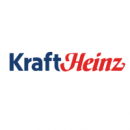The sparkly gold cover of James Clear’s Atomic Habits seems to be everywhere — the endcap at Target, on the next pool chair over, in the corner of a Saturday morning Instagram post and at the top of bestseller lists. Clear’s approach is simple: “If you want better results, then forget about setting goals. Focus on your system instead.”
This systematic focus isn’t only relevant for those seeking self-transformation. A focus on systems is also transforming the world of data science.
While Clear’s systems are built on habits that become automatic, data scientists at the Kraft Heinz Company and QuantumBlack are building systems that rely on artificial intelligence (AI) and machine learning (ML) to automatically process data and extract valuable insights.
As the field advances rapidly, data scientists are focused on both these end-to-end AI and ML solutions and the value they bring to businesses. By implementing these integrated solutions, companies are able to better utilize data to inform decisions across the business, both internally and consumer-facing.
Built In Chicago sat down with data scientists from both Kraft Heinz and QuantumBlack to learn more about the trends they are watching and the systems that are pushing their work into the future.

The Kraft Heinz Company is building a modern cloud and data ecosystem to power their business.
What’s one data science trend you’re watching closely right now?
I’m closely watching two emerging trends — an increasing demand for end-to-end AI solutions and how closely data science works with business and technology. It is important to understand the needs and wants of business users while balancing expectations on the technical side, especially when it comes to deploying solutions.
It is important to understand the needs and wants of business users while balancing expectations on the technical side.”
What influence will this trend have on your work?
As companies rapidly develop end-to-end AI solutions that are integrated into the business, these two trends are pronounced within the consumer packaged goods industry. Integral to end-to-end AI solutions is working on the cloud, which is evolving rapidly in terms of nature and scope. Using distributed computing for ML-driven marketing is one example. Distributed computing refers to solving a computing problem over a network of computers to process large volume datasets. These business problems range from using distributed cloud computation to digest massive amounts of media exposure data to measure and optimize marketing campaigns with cloud ML solutions.
How are you getting ahead of this trend now?
At The Kraft Heinz Company, we are placing a greater focus on leveraging cloud services to support data-driven initiatives such as artificial intelligence and advanced analytics. This allows us to quickly move machine learning products from proof of concept to pilot to scale to deliver value for the business. For our marketing, this means meeting consumer demand moments with speed and agility at scale. Our marketing science solutions are showing great results in terms of engagement metrics like click-through rates as well as spend metrics like return on ad spend.
What’s one data science trend you’re watching closely right now?
I am currently paying a lot of attention to machine learning operations (MLOps). Organizations are still learning about how to extract value from data and most of the projects fail to sustain models in operation. It is crucial to streamline the process of MLOps to avoid the death of multiple minimum viable products, assuring that data scientists can focus on model development and monitoring.
What influence will this trend have on your work?
MLOps is already influencing how we do advanced analytics. All over the world we see organizations striving also with the non-technical aspects of sustaining AI-based solutions. It is very different from the deployment of traditional IT software or the creation of new business functions such as pricing. Putting models to work in a sustainable way requires not only MLOps from a technical perspective but also from an organizational and business process lens.
MLOps is already influencing how we do advanced analytics.”
How are you getting ahead of this trend now?
To stay abreast of the latest and greatest, I’m studying technical aspects of MLOps while also trying to understand what these projects require from processes and from business analysts. Here at QuantumBlack, we often work in small teams made up of data scientists, data engineers and digital consultants and analysts, which helps bring together a holistic view on how we approach projects.









